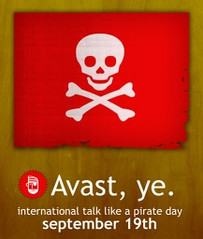 Two weekends ago at the Wyoming Book Festival, we enjoyed hearing Nancy Pearl speak. Nancy--and everyone calls her Nancy--is the body model for the Librarian Action Figure (picture with Nancy at left), the author of reading guides such as Book Lust, and a regular commentator on NPR's Morning Edition.
Two weekends ago at the Wyoming Book Festival, we enjoyed hearing Nancy Pearl speak. Nancy--and everyone calls her Nancy--is the body model for the Librarian Action Figure (picture with Nancy at left), the author of reading guides such as Book Lust, and a regular commentator on NPR's Morning Edition.Nancy modestly explains that the Librarian Action Figure with its stereotypical shushing motion is not really all about her--that it represents librarians everywhere who are ready to help readers find books they love. She's traveled the world since the Action Figure came out and reports that only 23 librarians do not have a sense of humor--those are the ones who are really mad about the Action Figure.
To keep up with Nancy, we recommend Nancy Pearl's Book Lust Wiki which provides such jewels as the Rule of 50 that first appeared in Book Lust:
Believe me, nobody is going to get any points in heaven by slogging their way through a book they aren't enjoying but think they ought to read. I live by what I call 'the rule of fifty,' which acknowledges that time is short and the world of books is immense. If you're fifty years old or younger, give every book about fifty pages before you decide to commit yourself to reading it, or give it up. If you're over fifty, which is when time gets even shorter, subtract your age from 100. The result is the number of pages you should read before deciding.












 ms.dsk is reading
ms.dsk is reading  Rob Koelling is reading
Rob Koelling is reading  S. Renee Dechert is reading
S. Renee Dechert is reading  Mary Ellen Ibarra-Robinson is reading
Mary Ellen Ibarra-Robinson is reading  Bill Hoagland is reading
Bill Hoagland is reading  Jennifer Sheridan is reading
Jennifer Sheridan is reading  Robyn Glasscock is reading poetry by
Robyn Glasscock is reading poetry by  Susan Watkins is reading
Susan Watkins is reading